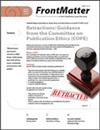两种跳蛛对猎物的不愉快和毒性的替代反应
IF 0.9
3区 农林科学
Q3 ENTOMOLOGY
引用次数: 2
摘要
摘要多面手捕食者面临的一个关键挑战是避免猎物体内的毒素。特定物种的策略包括完全避免令人厌恶(和潜在有毒)的猎物,以及在食用后利用生理机制代谢毒素。我们比较了两种跳蛛,Habronattus trimaculatus Bryant,1945和Phidipus regius CL Koch,1846。基于几项轶事观察和它们生物学的其他方面,我们先验地假设,与王蛙相比,三尖刺蛙(1)不太愿意以令人不快的猎物为食,(2)更容易受到摄入的毒素的影响。在实验1中,我们给这两个物种的蜘蛛和大小匹配的浸有奎宁的蟋蟀。与我们的假设一致的是,所有的三尖刺H.都攻击并拒绝它们,而所有的王P.regius都攻击并吃掉它们。在实验2和3中,我们将这两个物种的蜘蛛分配给具有不同毒性水平的实验性喂食处理(使用有毒的弹尾虫、念珠菌Folsomia candida),并评估其对生长的影响。这两种蜘蛛都以弹尾蛛为食。总的来说,这两个实验的结果表明,弹尾虫对这两个物种都有负面影响,但这些影响在三刺H.中更强。Habronattus FO Pickard Cambridge,1901具有一种独特的红色视网膜过滤色素(在Phidipus CL Koch,1846中没有发现),这可能会提高它们区分红色和橙色的能力。这种独特视觉系统的进化可能是由它们对猎物毒素的易感性增强所驱动的,因此也有利于避免用长波长颜色宣传毒素的猎物。本文章由计算机程序翻译,如有差异,请以英文原文为准。
Alternative responses by two species of jumping spiders to unpalatability and toxicity in prey
Abstract. A key challenge for generalist predators is avoiding toxins in prey. Species-specific strategies range from total avoidance of distasteful (and potentially toxic) prey to the use of physiological mechanisms to metabolize toxins after consumption. We compare two species of jumping spiders, Habronattus trimaculatus Bryant, 1945 and Phidippus regius CL Koch, 1846. Based on several anecdotal observations and other aspects of their biology, we hypothesized a priori that H. trimaculatus would be (1) less willing to feed on unpalatable prey and (2) more susceptible to toxins that are consumed compared with P. regius. In Experiment 1, we presented spiders of both species with size-matched quinine-dipped crickets. Consistent with our hypothesis, all H. trimaculatus attacked and rejected them while all P. regius attacked and consumed them. In Experiments 2 and 3, we assigned spiders of both species to experimental feeding treatments with varying levels of toxicity (using toxic springtails, Folsomia candida) and assessed effects on their growth. Spiders of both species readily fed on the springtails. Collectively, results from these two experiments suggest that springtails have negative effects on both species, but that these effects are stronger in H. trimaculatus. Habronattus FO Pickard-Cambridge, 1901 has a unique red retinal filter pigment (not found in Phidippus CL Koch, 1846) that likely improves their ability to discriminate reds and oranges. The evolution of this unique visual system may have been driven by their heightened susceptibility to prey toxins, and thus the benefits of avoiding prey that advertise toxins with long-wavelength colors.
求助全文
通过发布文献求助,成功后即可免费获取论文全文。
去求助
来源期刊

Journal of Arachnology
生物-昆虫学
CiteScore
2.20
自引率
10.00%
发文量
34
审稿时长
>12 weeks
期刊介绍:
The Journal of Arachnology publishes scientific articles reporting novel and significant observations and data regarding any aspect of the biology of arachnid groups. Articles must be scientifically rigorous and report substantially new information.
 求助内容:
求助内容: 应助结果提醒方式:
应助结果提醒方式:


